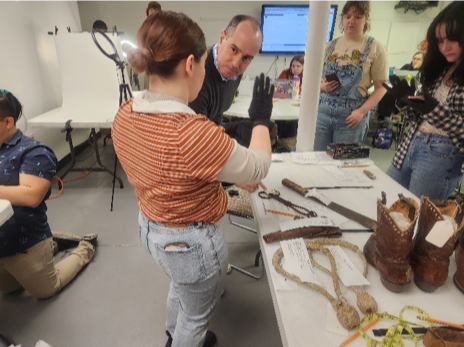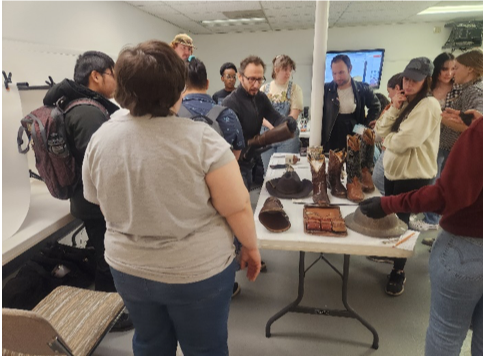This spring, CU Denver students helped the Black American West Museum and Heritage Center (BAWMHC) take a major step toward accreditation. As part of Professor Bill Wagner’s Management of Material Culture and Museum Collections class, twenty-two undergraduates and graduate students created a digital catalog of more than 1,400 items—roughly three-quarters of the museum’s total collection. Along the way, the class developed a range of skills necessary for operating a small museum and gained firsthand experience with practical and ethical issues in the field of collections management.

The Black American West Museum was founded in 1971 by Paul W. Stewart, a Denver barber, amateur historian, and collector, who had a passion for documenting African American contributions to the development of the western United States. Today, the museum is housed in the former home of Dr. Justina L. Ford, the first licensed African American female physician in the state of Colorado. In recent years, the Museum’s Board of Directors have been preparing to apply for accreditation from the American Alliance of Museums. To achieve this goal, the Museum first needed to create a digital catalog in order to better organize, interpret, and care for its rich collection of historical objects and archival documents.
In the summer of 2023, Professors Wagner and Rachel Gross met with the BAWMHC Board to begin planning a class project in which CU Denver students would work on cataloging the Museum’s collections. Beryl Phillips, Chair of the Museum’s Collections Committee, also enlisted the help of two veteran museum professionals: Dr. Chip Colwell, an archaeologist, author, and founding editor-in-chief of Sapiens magazine; and Jeff Phegley, a former Collections Manager from the Denver Museum of Nature and Science. Together, this team of volunteers developed a plan to create the Museum’s first online catalog using an application called CatalogIt.
Over the course of five site visits during the Spring semester, Prof. Wagner’s class cataloged all 242 objects on exhibit in the Justina Ford house. For each catalog entry, students took high-quality the object and entered a variety of useful information about its historical significance, condition, provenance, and location within the museum. After completing these detailed catalog entries, the class created another 1,178 more basic entries for collections stored in the museum’s annex. Finally, students developed a comprehensive manual of cataloguing policies and procedures, which will enable future volunteers to update and expand the catalog for years to come.

Through their hard work, CU Denver History students have left a lasting legacy at the BAWMHC. As the Museum’s Collections Manager, Jeff Phegley, put it, “The dedication, accuracy, sensitivity, and focus of all the students have set BAWMHC on a definitive course for success in tracking its valuable collections, which will lead towards successful academic research, community engagement, and educational opportunities.”
-- Maren Parchen
